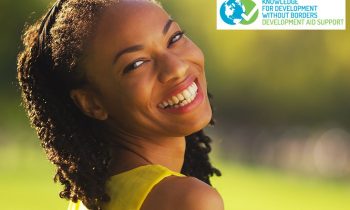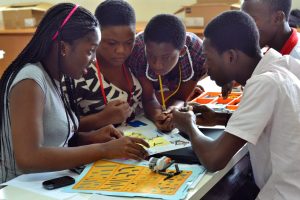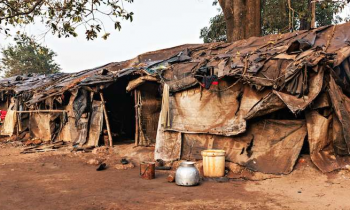Communicating Your Mission Through Photography
One of the powers of photography is its ability to capture a fraction of a second within a continuous thread of action that inspires and compels viewers, as well as transforming perceptions attitudes, and knowledge-shairng practices. A poignant well-placed image can elicit the empathy that connects people to places and inspires action. Photography is the mirror of life, as truthful as your intentions but faster than the human eye (try blinking 60 times per second!).
Project staff traveling and working in-country have a unique opportunity to promote their organization’s mission and document local issues. When photographing in the field, consider who the ultimate beneficiaries of the project are and the mechanisms for delivering knowledge and/or services.
Images of conference speakers, working groups, and field staff are often invaluable for an organization, but fail to reflect the realities of global public health interventions. A compelling image not only engages users, it is also a powerful tool to remind both funders and supporters of the value, benefit and reach of project activities.
TIPS FOR THE FIELD
Create a Narrative
Context is critical for engaging viewers in your story. There are four easy spatial elements that quickly establish a visual narrative. For example, if you are documenting a malaria project in rural Africa, you could:
- Capture the environment – the widest view (e.g. a street view of the town and surrounding area);
- Photograph the project staff in action (e.g. immunizations, bed net treatment, spraying insecticide);
- Focus on a subject – a portrait of a beneficiary (e.g. a family portrait with a bed net in the background); or
- A detail (e.g. a close-up of a bed net package, malaria test supplies or immunization card).
You are Not Close Enough
Do not be afraid to fill the frame, whether with a single detail, a health-care professional serving clients, or a portrait of a mother and child. For portraits, remember that just because a composition is tight it does not mean the subject has to be looking at the camera; a well- composed photo can easily convey a sense of action.
NOTE: Although it is great to use the zoom on a camera, as a rule of thumb, stick with optical zoom and stay away from digital zoom. Digital zoom relies on interpolation – the technical term for computer generated pixels – which will almost always result in a more pixelated and less sharp image.
Where is the Light?
Whether photographing indoors or outside always remember to think about the light source. Try to avoid backlit subjects unless you are using a fill flash. Position yourself with the light source behind you or to your side, but be careful not to cast a shadow on the subject. When possible, avoid photographing at noon – this will create harsh shadows that can obscure details. Counter this effect with a fill flash or use the shade of a building. Overcast days, although not ideal for landscapes, are great for portraits because there are no harsh shadows and no squinting from the subjects.
Perspective
A dynamic view, a leading line, an empowering view, or a vulnerable gaze, the choice is yours.
The First Picture is Not the Last
Did they blink? Was my finger in front of the lens? Did the flash fire? Do not second-guess yourself; be ready and keep shooting. Photography is about body language, especially when there are language and literacy barriers.
When you lower the camera, a subject may think you are finished. After the first shot, a quick smile and eye contact without lowering the camera will generally buy you a few more frames and often help put the subject at ease. If they glance away, keep shooting and get a candidate photo.
Remember You are in Control of the Camera
Should you have your camera set on automatic? Although it is perfect for snapshots, you can create a more powerful image by setting the camera to P to gain manual control of the flash or ISO, while retaining all other auto settings. Switch to A and set your own aperture (f-stop) and the camera will automatically set the shutter speed. Change the dial to S and set the shutter speed, and the camera will automatically set the correct aperture (f-stop). Once you are familiar with your camera and user’s manual switch over to M for all manual settings.
TAKE NOTES
Captions are vital to documenting the subject of your images and the context in which they were taken. It is always a good idea to travel with a journal. Here are some general guidelines that you can follow for what type of notes to take.
| Category | Notes |
|---|---|
| File Name/Reference ID: | File Name: Reference your camera display for image ID numbers |
| Caption: | Caption: The first sentence describes the photo in the present tense, using an “action” verb (“answers”) and includes WHO, WHAT and WHERE. The second sentence gives context to the photo and may explain why it’s important. There is no limit to the length of a caption. |
| Date (if not stated in caption): | Date: The year is sufficient (e.g. 2009). However, you may be as detailed as you like. |
| Country (if not stated in caption): | Country: You may also want to include additional information such as the village, town, district or region. |
INFORMED CONSENT
The role of a photographer is not just confined to the pursuit of aesthetics. It is equally important to be conscious of your interactions with photo subjects, including understanding your legal and ethical responsibilities. Any photographer, whether program staff doubling as an amateur photographer or a hired professional, should understand the role of editorial photography in nonprofit health communication.
Unlike commercial photography, editorial photography calls for a journalistic approach to taking and using photos. In other words, editorial photography is intended for objective, accurate representation or illustration of a real situation subject, or physical location. The acquisition and use of images should be weighed against the protection of photo subjects. Laws vary from country to country concerning photography practices, editorial principles, and ethical issues in development photography.
By: David Alexander
Retrieved from:http: www.photoshare.org/photo/2005-607


